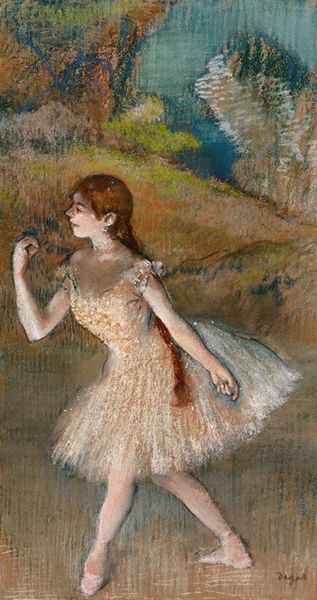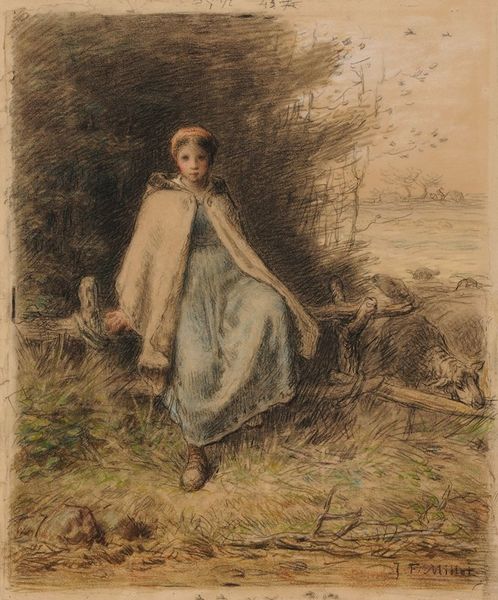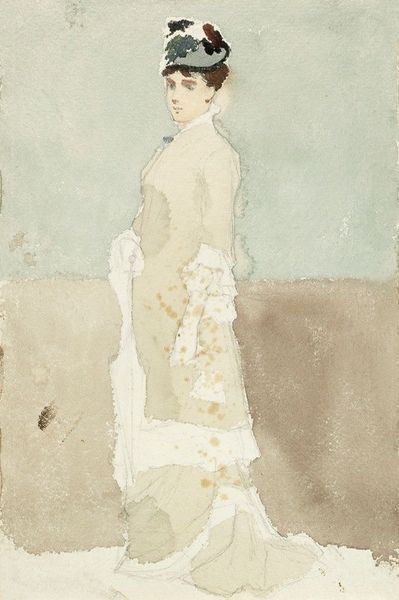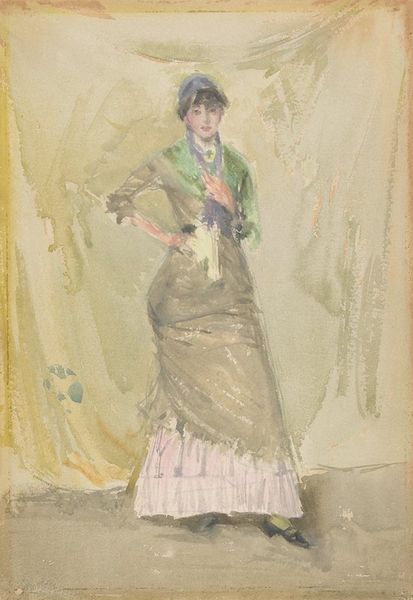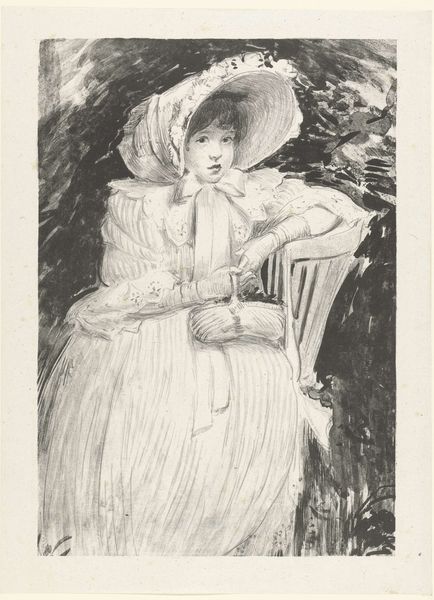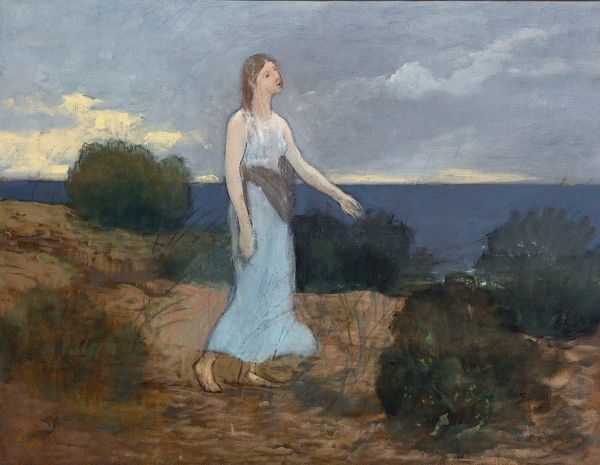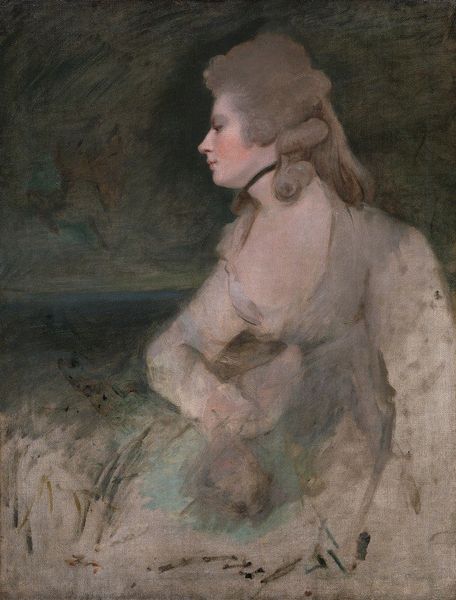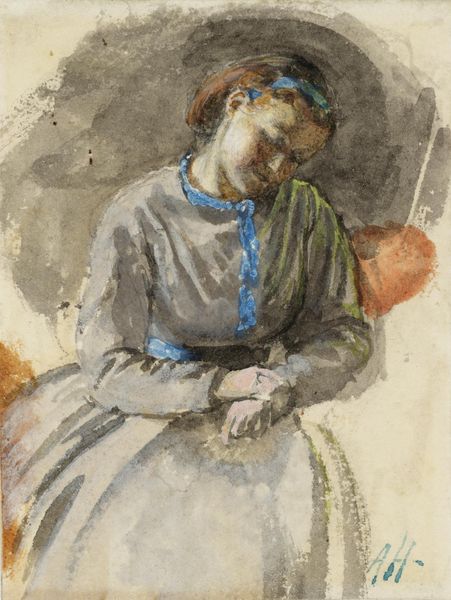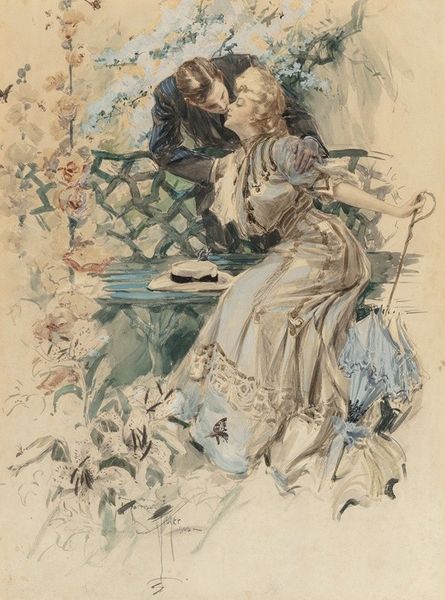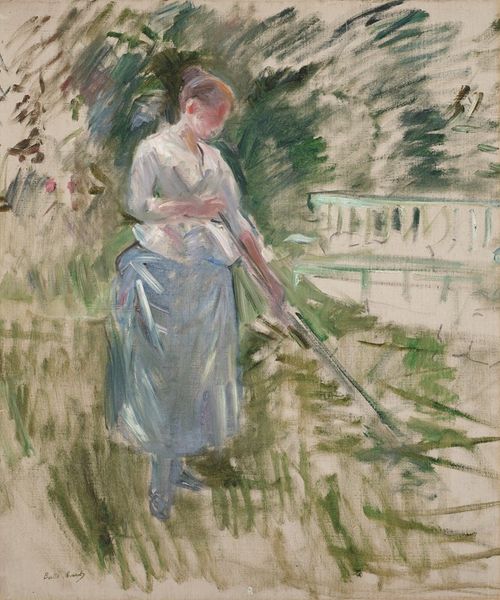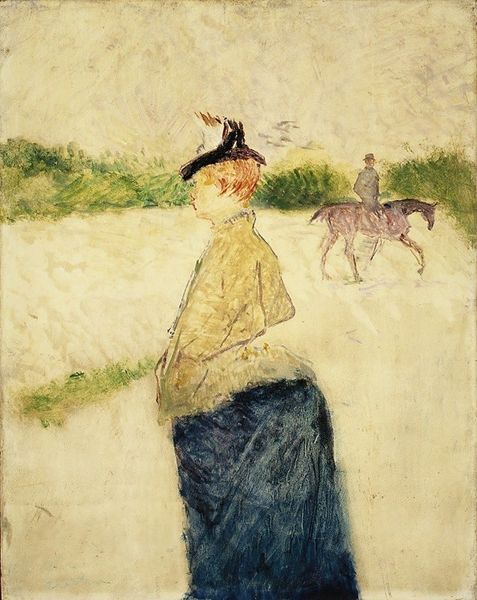
Copyright: Public Domain: Artvee
Curator: This is Winslow Homer's "The Garden Wall," a watercolor painting dating back to 1880. What are your first impressions? Editor: A certain wistful loneliness strikes me immediately. She's sitting there, posed, but not quite engaged. A beautiful prison? Or is she the warden? Curator: You’ve picked up on some really fascinating themes already. That feeling of quiet reflection… it's very typical of Homer's work in this period, when he focused on these solitary female figures in natural settings. It evokes a romantic mood but tempered with his direct style of painting. Editor: The garden wall itself is loaded with symbolic possibilities. Walls inherently divide, delineate, creating spaces inside and outside. It's all about boundaries, both physical and perhaps emotional for our sitter. And those demure roses add a poignant accent to the gray landscape, suggesting fleeting beauty and the ephemerality of life. Curator: Yes! I love the way you connect those ideas. Homer wasn't necessarily concerned with academic precision—instead, he aimed to capture the fleeting, sensory impressions of a scene en plein air, something the Impressionists did at the same time. The slightly desaturated watercolor palette reinforces that melancholy we felt right away, doesn't it? Editor: Absolutely. That deliberate choice echoes pre-Raphaelite interests in medieval aesthetics. Also, this pale coloration, far from conveying drabness, somehow amplifies the silent narrative… like fading memory. The garden isn't blooming riotously; instead, there is serenity but perhaps on the brink of sorrow. She’s not meeting our gaze either, like she sees things we couldn’t perceive. Curator: I wonder what she's looking at… Homer doesn't give us many clues, does he? It's left intentionally ambiguous, fostering our personal readings. I am almost certain he wants the viewer to project a certain something onto her pose. Editor: Precisely! That artistic space—a kind of creative void Homer has allowed, a zone for the collective unconscious to interject its cultural symbolism. What did boundaries mean back then to women? Who decided what was "inside" versus "outside" the acceptable social sphere? Even though Homer offers us ambiguity, those social themes certainly are present to be unpacked by his artistic depiction. Curator: That ambiguity is also so potent because watercolors are tricky, spontaneous... difficult to control compared to oils. Maybe this hints at uncontrollable undercurrents beneath her placid facade. It's as though her calm pose hides turmoil, a private world we glimpse from afar but cannot access. Editor: I'm left with the powerful image of the wall. I can not shake this silent emblem dividing one realm of the other and protecting both worlds in perpetuity. I think of "sterile and dangerous" yet here, it almost breathes and holds this young woman still... like she could decide either way what lies beyond.
Comments
No comments
Be the first to comment and join the conversation on the ultimate creative platform.
